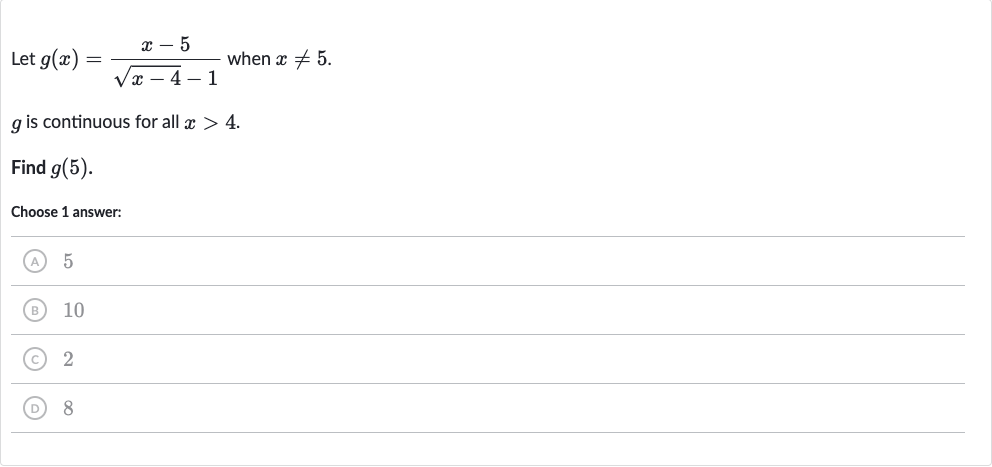Full solution
Q. Let when . is continuous for all .Find .Choose answer:(A) (B) (C) (D)
- Given function: We are given the function and we need to find the value of . Direct substitution of into the function would result in a indeterminate form, so we need to manipulate the function to remove the discontinuity at .
- Rationalizing the denominator: To remove the discontinuity, we can rationalize the denominator by multiplying the numerator and the denominator by the conjugate of the denominator. The conjugate of is .
- Simplifying the expression: Multiply the numerator and denominator by the conjugate to simplify the expression:g(x) = .
- Further simplifying the denominator: Simplify the denominator using the difference of squares formula :g(x) = .
- Cancellation of terms: Further simplify the denominator:.
- Substituting : Now, we can cancel out the term in the numerator and the denominator, as long as is not equal to . However, since we are interested in the limit as approaches , this cancellation is valid for the purpose of finding :
- Calculating the result: Substitute into the simplified expression to find :
- Calculating the result: Substitute into the simplified expression to find :
.Calculate the square root and the sum:
.

